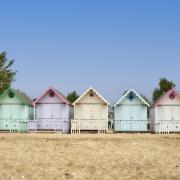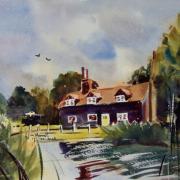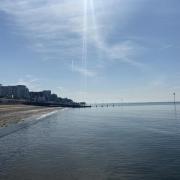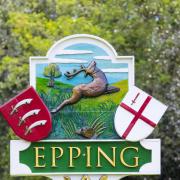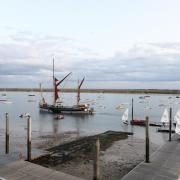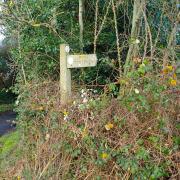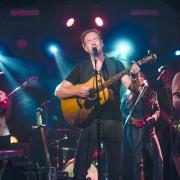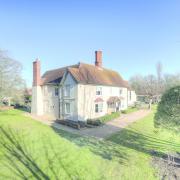Sebastian Oake heads to Wallasea Island near Rochford to discover how this magical landscape is being carefully restored to allow nature to not just survive but thrive
At a time when rising water levels threaten our coastline, it might seem unusual to deliberately allow the sea to take charge. But this is what has been happening on Wallasea Island in Essex. It is not about giving in, however, but is part of a carefully planned programme to bring back habitats that have been steadily lost over time.
Rachel Fancy has been the site manager at the 740-hectare RSPB reserve of Wallasea Island for the past eight years. ‘This has been a big project for the RSPB,’ she says. ‘We have been, in effect, realigning the coast. This has enabled us to create new saltmarsh, mudflats and shallow saline lagoons – all vital places for coastal nature.’

In many ways, the project has reflected growing realities. Once an arable farm, the quality of the land was diminishing and it was obvious that the clock was ticking for the future of farming here with the danger of unmanaged breaches of defences by the sea and widespread flooding with salt water increasing all the time. Earlier work by government department Defra had already led to coastal realignment along the north side of the island to create Allfleets Marsh.
The Wallasea Island Wild Coast Project comes under the broad umbrella of rewilding, now very much a buzz word and a point of debate amongst land managers, farmers and environmentalists. But what does it actually mean?
Rewilding Britain is an organisation that wants to see major nature recovery across 30 per cent of Britain’s land and sea by 2030, with 5 per cent of this being rewilded areas. Spokesperson Richard Bunting says: ‘Rewilding is large-scale nature restoration, taking ecosystems to the point where nature can look after itself. Traditional nature conservation has been about protecting specific habitats or species. It has done some great work but we are now being outpaced by the biodiversity and climate crises.

‘Rewilding doesn’t mean human beings taking their hands off the steering wheel suddenly,’ Richard says. ‘Nature is in such a bad place at the moment that that is not sensible. Nature needs help to get going in the right direction. For example, Britain is an island nation. If terrestrial species have been lost, they’re not going to get back without our help.’
Many people assume, often from media headlines, that this must mean returning apex predators such as lynx to our countryside, but to people like Richard, this is something of a myth. ‘It’s not automatically about big mammals. Red squirrels are nature’s tree planters but they too are now missing from most of England and Wales. Beavers are nature’s habitat engineers and could do good work in our countryside if we welcomed them back. It’s also about the small but very important species too, such as wood ants and bumblebees.’
The concept of rewilding has not attracted support from every quarter. Some farmers perhaps see it as a surrender of agriculture to nature and a reversal of everything they have ever worked for. Others say we need our farms producing as much food as possible.
The National Farmers’ Union speaks for many in the industry. A spokesman says: ‘British farming plays an integral role in shaping the cherished landscapes we see and enjoy today. Rewilding vast tracts of British farmland would mean reducing UK food production and importing the shortfall from other parts of the world, which may have been produced to lower animal welfare and environmental standards.’
The Country Land and Business Association is worried about our food supply but does see a place for rewilding. ‘There is no doubt that we need to go further in reversing nature decline,’ says a spokesperson, ‘and for that reason rewilding is a legitimate part of the land use mix in this country.
‘It is, however, preferable to reserve rewilding projects for areas of poor-quality agricultural land. At a time when we still import 40 per cent of our food, it is vitally important that we consider our national food security when considering environmental schemes.’

Rewilding Britain argues that rewilding can certainly take place without affecting productive farmland. Richard Bunting says, ‘Rewilding can be achieved by restoring native woodlands, moorland, peatland, rivers and marine habitats, without losing productive farmland or our farming heritage.
‘Increasing numbers of farms are joining our Rewilding Network. They are still producing food, while restoring nature on marginal land with poor soils. Combining traditional farming and rewilding in this way can bring real opportunities for farmers in, for example, nature-based tourism.’
Aside from the debate, rewilding does seem to have ignited the public’s imagination. ‘We’ve seen a real shift over the past decade in terms of interest in nature,’ says Richard. ‘Rewilding has inspired growing numbers of people to play a part. It can unfold on different levels, including local communities, and is empowering, providing a channel for people to engage and challenge the problems we face.’
On Wallasea Island, rewilding has drawn on some surprising resources. Earth excavated during the construction of London’s Crossrail – 3 million tonnes of it – has made it all happen. Arriving by sea, it has provided the means to engineer a new 115-hectare area of intertidal saltmarsh, mudflats and islands at the eastern end of Wallasea, called Jubilee Marsh. Islands have also been created on saltwater lagoons with new grazing marsh and networks of creeks. The aim has been to produce gradually sloping habitats, helping to future-proof them against further rises in sea level caused by climate change. The hope is that it all adds up to a true design for nature for the future.

The work started in 2015 and is now beginning to bear fruit. Rachel Fancy has watched progress from the start. ‘I’ve seen the reserve develop from a building site to what it is now, with wildlife coming in and visitors able to enjoy that using 15 kilometres of pathway.’
This nature reserve now has much to boast about. In the winter, it attracts waders and wildfowl, including golden plover, grey plover, lapwing, dunlin, widgeon, teal and shelduck. ‘They come down from the North to use the new habitats,’ says Rachel. ‘We can have 20,000 birds on Jubilee Marsh alone.’ In winter, people are also spotting hen harriers and short-eared owls.
Marsh harriers are present all year round and in spring and summer there is large breeding colony of avocets. Farmland birds are important too. Rachel says, ‘Last year we had 70 pairs of corn bunting and 40 pairs of yellow wagtail.’ Combine that with brown hares, water voles and curiosities such as the black oil beetle, plus interesting flora including sea barley and sea clover, and it is clear this is once again a key place of natural interest.

The Wallasea Island Wild Coast Project is a case of rewilding that has very much required the hand of humans to kick start it. Now that things are in place, is it time to stand back and leave it alone? Not quite. Water levels in the lagoons need to be controlled using sluices, while the wet grassland needs to be grazed by farmed cattle to control the length of the vegetation for waders and raptors.
Jubilee Marsh, however, will be managed almost entirely by the sea. The tide goes out and comes back in bringing sediment and seeds, plus the invertebrates and fish so vital to sustain the population of waders and wildfowl. The sea is very much in control here. Nature is back in the driving seat.
Wallasea Island through the seasons...
Spring
Passage migrants in spring include whimbrels and green sandpiper, while the islands in the lagoons provide plenty of nesting space for avocets and common terns. You can listen to skylarks singing high in the sky, see hundreds of gulls packed onto the islands and spot hares in the grassland.
Summer
During summer months, you can watch terns diving for fish to feed their young and see elegant avocets searching for food in the shallow lagoon waters. Marsh harriers are out hunting in the reserve for small mammals. Mid to late summer is the best time to see butterflies on the seawalls, including marbled white, common blue, small heath and skippers.
Autumn
If you stand quietly, you might spot a water vole in one of the ditches. Look over the River Roach for common seals hauling themselves out on to the banks. Autumn brings further passage birds, including ringed plovers, dunlins, greenshanks, black-tailed godwits and redshanks. Numbers of wildfowl such as teal and wigeon start to climb and Brent geese arrive to spend winter.
Winter
For the sheer numbers of birds, you should visit in winter to see the flocks of waders and wildfowl on the lagoons and mudflats. You might see them panic when a peregrine passes through. Short-eared owls and hen harriers hunt the grassland for small mammals. You may also glimpse a kingfisher flying along the ditches and channels.





